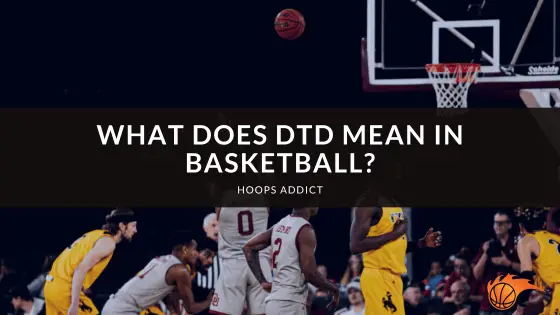You don’t often see a zone defense in the NBA. More often than not, if it’s applied in a professional game, it’s to break the rhythm of “after timeout” plays or when the other team has a serious shooting deficiency. Regardless, the 2-3 zone is played in all levels of basketball. If you are just starting out, it’s essential to know the basics on how to beat a 2-3 zone in basketball. Most of these concepts are simple, but it will certainly help you adjust to playing against a 2-3 zone defense.
 What Does 2-3 Zone Defense Mean in Basketball?
What Does 2-3 Zone Defense Mean in Basketball?
A zone defense, in general, is when a defensive player guards an area of the court instead of a particular person. There are several types of zone defense, including the 2-3 zone, 1-3-1, 3-2, 1-2-2, 2-1-2, Box and one, and others. The 2-3 is the most common type of zone defense, so what exactly is a 2-3 zone defense?
The term”2-3” refers to the layout of defensive players. More often than not, the two smallest players, usually the guards, are positioned on top of the zone near the high post. They have the option to go up to the three-point line if needed. The other three players line up near the key, with the center in the middle, and the forwards more than an arm’s length away. You may also hear the terms “front” and “back” of the defense, with the former referring to the two players on top and the latter referring to the three players near the key.
 How is the 2-3 Zone Defense Used for?
How is the 2-3 Zone Defense Used for?
Many think a 2-3 zone is a strategy employed by coaches to rest their players on defense. That’s not true at all. A tremendous and aggressive 2-3 zone defense requires as much energy and effort as an excellent man-to-man defense. With that being said, a 2-3 zone should not be relied upon as a team’s primary defense, although it is a good change-up strategy to give other teams a different look.
However, as a general rule, you may use the 2-3 zone defense against anybody, whether it’s a bigger, slower team or a quicker, more athletic one. You only have to change the way you play a 2-3 zone depending on who you play on offense.
For instance, if you are the bigger and slower team, limit taking chances on steals. Instead, force them to move the ball around. If you are the quicker, more athletic squad, gambling for steals may incite the opposition to take hurried shots and forced decisions to their detriment.
 Can You Play 2-3 Zone in the NBA?
Can You Play 2-3 Zone in the NBA?
In the NBA’s older days, zone defense is not permitted. If a team gets caught playing any type of zone, they will get called for a violation called “illegal defense.” Today, NBA defenses are allowed to play zone, but with a little twist.
You see, the NBA’s rule book does not allow any defensive player that does not actively guard an offensive player. “Actively” here means, at least within an arm’s length and in a guarding position. If someone is not within an arm’s length of an offensive player, he should get out of the lane every three seconds. Otherwise, they will be slapped with a “defensive three-second violation,” an infraction that is considered a technical foul. The offensive team is thus awarded a free throw and ball possession.
Still, zone-type defenses are being used in the NBA, even in NBA Finals games. In 2011, the Dallas Mavericks implemented a 2-3 zone to disrupt the Miami Heat and take advantage of LeBron James’ perceived lack of outside shooting.
In 2019, the Raptors played a box-and-one, a type of zone defense, to pay close attention to Steph Curry when the Warriors both lost Klay Thompson and Kevin Durant to injuries. And most recently, the Miami Heat employed a 2-3 zone on the Lakers in the 2020 NBA Finals, to nullify their interior strength.
 How to Score Against 2-3 Zone in Basketball: 3 Basic Strategies
How to Score Against 2-3 Zone in Basketball: 3 Basic Strategies
A 2-3 zone defense has its limitations. If you are used to seeing man-to-man, and then the defensive team changed up to a 2-3 zone, it may take a little getting used to. However, just remember these strategies on how to score against a 2-3 zone in basketball.
1. Put your most skilled offensive player in the middle. Every zone defense has a gap, and this is where you attack it. One of the cracks in a 2-3 zone defense is the middle, the space between the back and front defense.
More often than not, offenses put the biggest player in the center. Unless that big man is Anthony Davis, that’s only going to put you in a world of trouble. An unskilled big in the middle of a zone could only get stripped and swarmed. The solution to this is to put your most skilled player there regardless of height and let him create based on the defense’s reaction.
If they swarm, he is most likely to work around the defense with a dribble or pass it somewhere to an open teammate. If he is left alone, he could simply turn around and fire a short jump shot. Either way, a skilled player making plays in the gap of the defense makes a whole world of difference.
2. Attack from behind the 2-3 zone defense. The rear or “behind” the zone is one of the best places to attack because literally, nobody from the defense can see it as it is happening.
What do we mean by “behind the zone?” Well, the back end of a 2-3 zone positions itself perhaps one or two feet in front of the basket. From there, the defenders could not readily see if there’s somebody in the short corners. This weakness often happens in ball reversals (the ball is passed from one side to the other), where the wing quickly flicks a pass to the corner. Since the corner guy is “behind” the zone, it takes a second before the defense realizes it. More often than not, a second is all it takes to fire an open shot.
Another concept of attacking from behind the zone is to keep your big man in the dunker’s area. As soon as the pass goes to the skilled guy in the middle of the zone, he quickly fires a pass (perhaps a touch pass) to the big man in the dunker’s area. Like in the first situation, the big man is behind the zone, so it will take a second for the defense to react to him. As soon as the defense turns their eyes, he is now going up for a layup or dunk.
3. Utilize the 1-3-1 offensive formation. This part is just showing where the other three players are on the court because one is already in the middle (your most skilled guy) and the other is in the dunker’s area (your big man). Where should you place the other three?
An optimal formation is having two other players on the wings, and one, possibly your best ballhandler, bringing the ball up and staying at the top of the key. Of course, they don’t need to stand there all the time, and off-the-ball movement is encouraged depending on the team’s defensive reads.
 3 Best 2-3 Zone Basketball Plays
3 Best 2-3 Zone Basketball Plays
1. Short Corner Mid Post. Using the short corner as a point of attack is one of the most basic strategies in taking advantage of a 2-3 zone defense. Now here’s a play that illustrates this.
From the 1-3-1 offensive formation where somebody patrols the middle of the zone, tweak that a little bit, and put a skilled big player (possibly a power forward) at the mid-post. More often than not, if the wing forces the low defender to rotate to him, you’ll leave the middle defender having to defend the guy on the mid-post and the guy on the dunker’s area. As you well know, 2 versus 1 isn’t a fair fight- at all.
If the defender on the other side helps his guy in the middle, the ball could simply reverse to a wide-open wing on the opposite side. The open offensive player on the wing could take the shot, flick another pass to an open teammate, or drive to the basket. From there, it’s just a matter of picking your poison.
2. 2-3 Zone Motion Offense. This offense probably originated with the Pittsburgh Panthers because it is often called the Pitt Zone Motion offense.
The best part of this play is it’s not structured. You only need to move the ball around, looking for a big man cutting in the free-throw area. If it’s not there, you may pass the ball on the perimeter or the wings until you get a decent look.
In this offense, the big men are rotating in the mid and high post. The other three players rotate from the wings to the top of the key. They should always maintain adequate spacing and be aware of the mistakes of the 2-3 zone and capitalize on them.
3. Baseline Screen Basketball Play.
We could not reiterate enough that the corners are the weakness for a 2-3 zone defense in basketball. Here is another play that takes advantage of that.
This one is a play for one of your best shooters, if not the best. The key is for three players to start action on one side. Your shooter, coming from the weak side cuts across the zone and starts to make his way to the corner. Now, take note that there are already four players on the strong side. The one nearest the corner will set a screen for the shooter coming out of the corner so he will be wide open.
A key to this play is to make the aggressive 2-3 zone defense shift. When the passer from the wing sees the action, he flicks the pass to the shooter flashing to the corner. Another trick to make this play successful is that the passer should not stare at the flashing shooter to hide his intentions.
Wrapping Things Up: How to Beat a 2-3 Zone in Basketball
2-3 zone defenses are a staple in high school and college basketball. It involves playing two guys on the top near and three guys on the backline, probably a center in the middle. While this could work for stretches, there are a lot of ways to work against a 2-3 zone defense in basketball.
One of the most basic strategies to use against an aggressive 2-3 zone defense is to be aggressive yourself. Always look to score and attack the gaps. A significant gap in a 2-3 zone is probably the middle, so you may put a skilled guy there so that if he receives the pass, he can make the best decision whether to shoot, pass, or attack off the dribble.
Another is to attack from behind the zone defense, perhaps in the short corner. Short corners are practically blind spots for defenses, especially if you get them to shift. And still one of the best ways to attack a 2-3 zone is by a constant player and ball movement, perhaps starting from a 1-3-1 offensive setup.
As you may see, the zone is a weapon and a liability at the same, especially if opposing teams already know how to beat a 2-3 zone in basketball. Of course, the best players always find ways to excel no matter the defense, but we hope that we have contributed to your education in 2-3 zone basketball plays. The next time you see a zone defense being played against you and your team, then you are now ready to come through the challenge.
Did you find this post helpful? Then you may also like other FAQ basketball articles here.

 What Does 2-3 Zone Defense Mean in Basketball?
What Does 2-3 Zone Defense Mean in Basketball? How is the 2-3 Zone Defense Used for?
How is the 2-3 Zone Defense Used for?
 Can You Play 2-3 Zone in the NBA?
Can You Play 2-3 Zone in the NBA? How to Score Against 2-3 Zone in Basketball: 3 Basic Strategies
How to Score Against 2-3 Zone in Basketball: 3 Basic Strategies

 3 Best 2-3 Zone Basketball Plays
3 Best 2-3 Zone Basketball Plays

